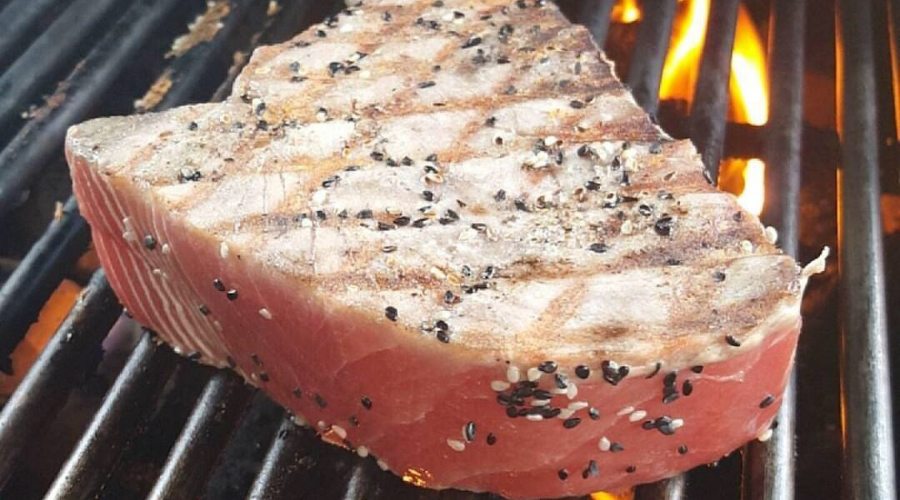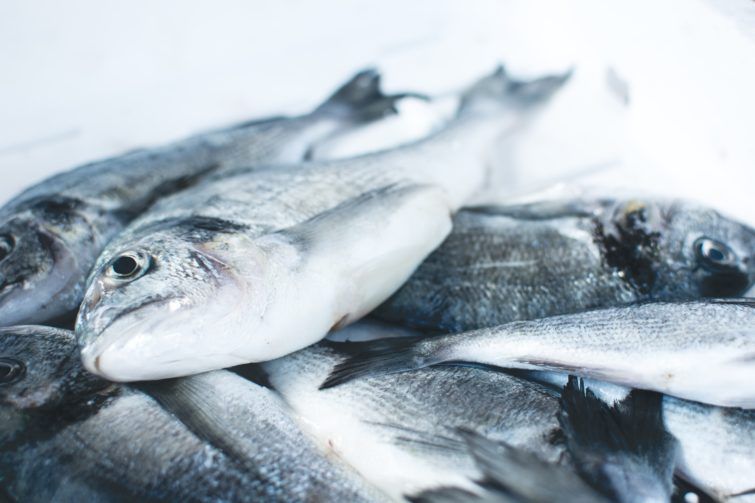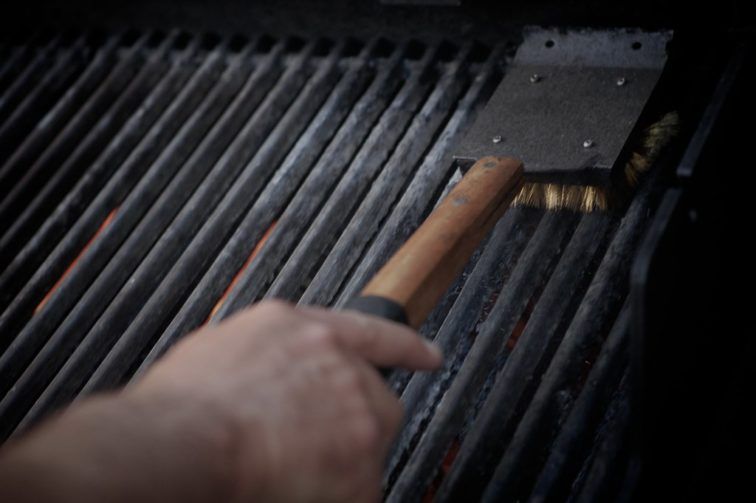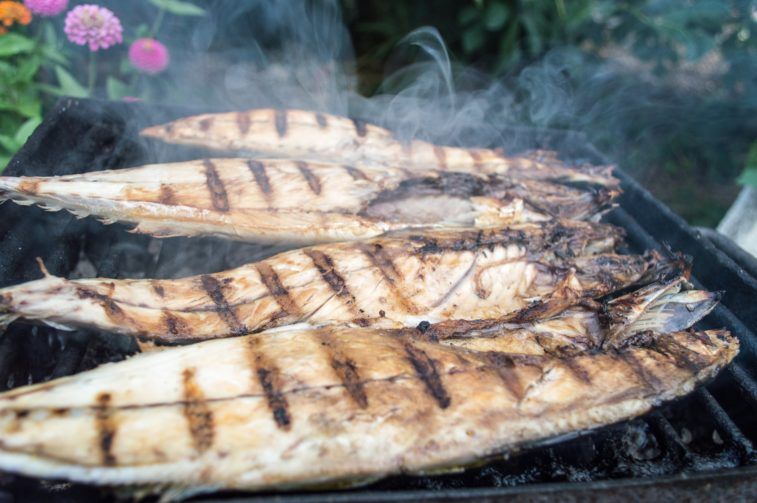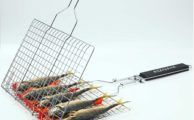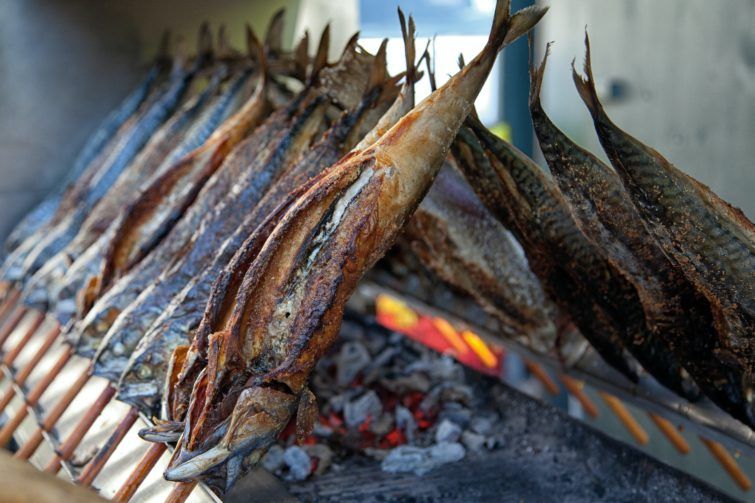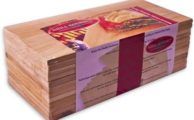Using a gas or charcoal grill to prepare fish is a great way to create unique flavors, but fish are delicate; as a result, barbecue chefs have the most success with steaks or filets of sturdy whole fish like trout and bass. If your menu calls for tilapia, bluegill, or flounder, bring out the cast iron skillet; on the grill, they might break apart and fall through the grate into the fire.
A Step-By-Step Guide On How To Grill Fish
Step one: Prepare Your Fish
Image Credits: Jakub Kapusnak on Unsplash
It all starts with your fish. If you want a hardy fish, salmon is a great choice. Yellowfin tuna or mahi-mahi is less oily. If you want something delicate with a subtle fish flavor, halibut might be for you. What? You caught a nice trout and want to cook that? This article is also for you.
At home, unwrap the piece of fish and rinse it well under cold water, immediately before preparation. Not all seafood counters are completely sanitary, so this will ensure any residue is removed. Carefully feel opposite the grain, or lines, of the fish, checking for bones. Small bones are often present and they should be carefully pulled out; also watch for them while eating.
Step Two: Clean Your Grill
Image Credits: BBQ Junkie on CreativeCommons
Good heat distribution and a very clean grill grate will assure that your fish cooks evenly without sticking to the grate surface. Clean out old ashes and coat your grate with light oil or non-stick spray. Do not apply too much oil or spray the grate over hot charcoal because the coating will flare and burn.
Step Three: Check If The Grill Is Ready
Image Credits: Askar Abayev z Pexels
Fish is best prepared on a hot surface. For charcoal grills, let your coals become red-hot, spread them evenly, allow them to turn totally white before grilling your fish. You want a hot temperature, but not too hot as this can cause fish to cook too quickly or dry out. To prevent sticking, the grate should be hot enough to create a slight sizzle when you place the fish on it.
Step Four: Grill Your Fish
Image Credits: Anton Nikolov on Unsplash
Tip1: Always Cook Fresh Fish
Any type of fish you Bar-Be-Que should be fresh, well-textured, and firm. Frozen fish does not hold up well because the freezing and thawing process breaks down the texture and natural oils in the meat. Thick cuts of fish, preferably with the skin left on one side, hold up better on the grate.
The flavors and oils in fish are actually in the skin and transferred to the meat while cooking. The skin can be removed before eating, or cooked thoroughly to add an added crunchy texture to the meat. The fish should be cool, but not cold when placed on the grate.
Tip2: Keep The Fish Skin
When moving the fish to the outdoor grill, keep the skin on it. This will help hold the fillet in one piece, making it easier to maneuver during the cooking process. Some fish also produce delicious, crispy skin on a grilling surface.
Tip3: Season While Grilling
If you are adding any type of seasoning, do so only while the fish is on the grill. Almost all seasonings contain salt, which will dry out fish if applied too early and cause the fish to fall apart while cooking.
Tip4: Don't Over-Cook or Over-Turn
Fish cooks very quickly and needs to be monitored constantly while on the grill. Overcooking fish will dry it out and cause it to fall apart. On a hot grill, it takes about 8 minutes per inch of thickness of fish steaks, and about 10 minutes per inch of whole fish. Raw fish looks glossy and somewhat translucent on the inside. A fish that’s properly cooked flakes easily with a fork – undercooked fish does not – and the gloss is gone. A properly cooked fish looks opaque.
Thicker textured and larger cuts of fish like salmon and shark might require more, but they should still be watched carefully. All types of fish should be turned only once while on the grate. When one side is seared, flip the fish with a large spatula and continue cooking the other side for an equal amount of time. Keep in mind that due to their high oil levels, fish will continue to cook internally for a few minutes even after removing from the grate.
Here's one way to make cooking easier: After seasoning, cut a piece of foil that's large enough to thoroughly wrap the fish. Place a dab of olive oil or melted butter in the center of the foil sheet and spread it around. Place the fish in the foil and push in the top and bottom sides of the foil.
Continue to seal it by rolling the longer sides together, forming a packet. These foil packets trap the juices, making the fish tender. It is important to be sure the sides of the packet are sealed tightly, because you'll need to flip halfway through cooking, and you don't want the juices running out.
Tip5: Handle Light Fish Delicately
Light-textured fish like tilapia and halibut will easily fall apart and fall through the grate. Support these types of fish by using a grill fish basket or covering your grate with heavy-duty aluminum foil with a few holes poked through the surface. Do not use thin foil as it will burn and fall apart over hot coals.
AIZOAM Portable Stainless Steel BBQ Barbecue Grilling Basket
This stainless steel grilling basket is an inexpensive and cheap option for grilling fish (or veggies, shrimp, etc.)
Before you place the fish in the basket for cooking, it is always a great idea to give the basket a good squirt with some non-stick cooking spray, so that the fish releases easily when done.
Tip 6: Use A Good Fish Sauce
An easy concoction is to grate a cucumber and squeeze out most of the juice. Squeeze in the juice from half a lemon, and about a quarter cup of mayo and sour cream with 1 teaspoon of dill weed. This sauce is especially good with grilled salmon.
Other Fish Grilling Options
Image Credits: Kurt Liebhaeuser on Unsplash
If you're looking for some additional ways to add unique flavor to your fish, below is the section for advanced students.
Try a Wood Plank
Cooking fish on wood planks is another way to add unique flavor to your fish, and they provide a solid base, solving the problem of tender fish that fall through grill grates. You can also try to cook fish over a campfire.
To cook fish on cedar, maple, apple, or cherry wood planks, you will need to add at least 50 percent more cooking time. Make sure your wood is scrubbed clean and has not been treated with chemicals. Soak the wood planks in water for a minimum of an hour.
Brush olive oil lightly on the top side of the board where the fish will lie as it is cooking. Then brush on lemon juice, herbs, and seasonings both before and during grilling. The fish is not turned while it is cooking on the plank, unlike all other types of cooking fish.
Cedar Grilling Planks
This 12 pack of cedar planks is reasonably priced and thicker than most of the competition. As with all good planks, they are single-use only.
Make sure the wood does not catch fire while you’re cooking. You do want the board to start smoking while the fish is cooking, though, because the smoke is what gives the fish the wood flavor. If the board gets a little too hot and actually starts to burn before the fish is cooked, have a spray bottle filled with water handy to extinguish the fire.
Use Aromatic Smoke for Extra Flavor
Adding aromatic wood chips like hickory or mesquite to your hot charcoal will create deeper flavors in the fish. Wood chips should be thoroughly soaked in water before using to avoid flare-ups, then wrap them in a foil packet that will lay on top of the fire.
Poke holes in the packet to let out the steam that will flavor the fish. For salmon, placing whole, large dill sprigs directly on the grate beside the salmon and closing the lid while barbecuing adds a wonderful flavor.
Marinate the Fish
Marinating the fish gives it a great flavor and helps keep the fish from sticking to the grill. Oil and herbs with a little citrus can be great marinades for many different types of fish. Make sure not to marinate the fish too long as the acid in the marinade will begin to cook the fish.
Seasonings for both large and small fish do not need to be excessive, especially for grilling. The flame or charcoals will give the fish a delicious flavor from its natural minerals, so over-seasoning it will ruin the flavor. For smaller fish, a marinade may be used for no more than 8 minutes. After this time, the fish’s texture will be altered and make it mushy. Larger fish may be marinated for up to 15 minutes.
Freshwater fish tend to have a more metallic taste sometimes, so squirting lemon juice on it or rubbing it with lemon pepper is advised. Larger fish do not require as much lemon juice. Salt, pepper, or fish seasoning rub is recommended for seasonings. Garlic, curry, and other strong spices are not good for grilling.
Steam the Fish
Steaming is not a typical grilling method, but it works great with fish. Create a simple foil pouch that can be filled with fish, slices of lemon, fresh herbs, or any other vegetables that are desired. Make sure to oil the pouch before adding the food. Be careful of the steam inside the pouch once the food is cooked.
Grilled on a Bed of Herbs
Herbs add great flavors to fish, but when fish fillets are being cooked on the charcoal or gas grill, herbs can also help to keep them from sticking to the grates. Toss the herbs in a marinade before placing them on the grill so that they do not stick, then place the fish directly on top of the bed of herbs. Thyme and rosemary are a great addition to many types of fish.
To Wrap Up
Grilling fish can be a frightening proposition, but when you consider all of the different methods for simplifying the grilling process it’s made a whole lot easier. Try some of the tips listed above the next time fish is on the menu to create a perfectly succulent grilled delight.

